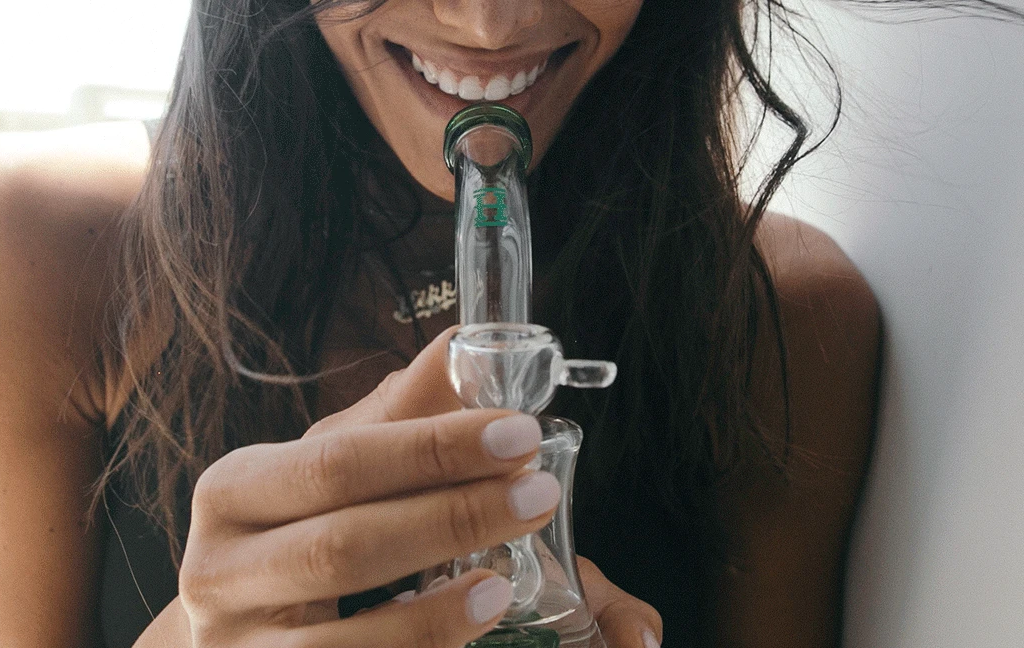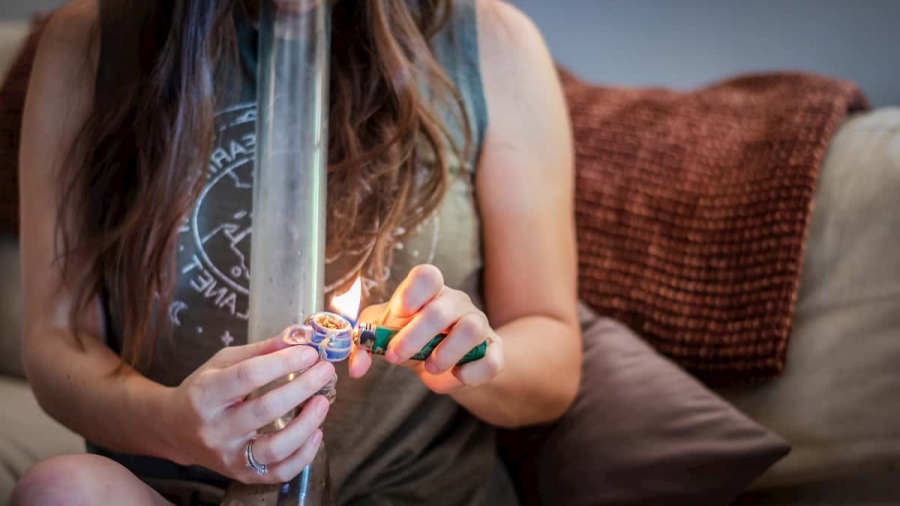At first glance, a water pipe may seem confusing, especially if you’ve never seen one used. In reality, however, water bongs are quite simple and easy to enjoy. A water bong filters and cools the smoke so that the experience is smooth and enjoyable. Using a water filtered device is one of the cleanest, smoothest, and healthiest ways to smoke tobacco or any other products, and they are a cinch to keep clean.
What is a bong?
A bong is a marijuana pipe that uses water to cool and filter the smoke, producing an especially smooth, clean-tasting, and potentially healthier smoking experience. The physics behind a bong are fairly straightforward: smoke is pulled through a chamber filled with water, and as the smoke bubbles up through the liquid, the water simultaneously cools down the temperature of the smoke and pulls out fine particulate matter including tar and ash.
Interestingly, there are a number of scientific studies showing the efficacy of water filtration. According to a literature review published by researcher Nicholas V. Cozzi, a study in 1963 found that “water filtration reduces both the amount of particulate matter and the number and quantity of toxic substances in the smoke that passes through it.” Similarly,a number of studies throughout the 1970s found that THC tends to pass through water while a number of other, potentially harmful substances are filtered out and stay behind in the water. Further supporting these findings, a study published in 1991 concluded that when smoke passes through water or some other wet surface, a number of toxic substances are removed.
What you need to smoke a bong
Here’s everything you need to smoke a bong:
- Your favorite strain of marijuana
- A bong. Be sure your bong has a downstem and bowl.
- A lighter or hemp wick
- Water
- A grinder
- For cleaning your bong you will need zipper-top plastic bags, plugs that fit the holes in your bong, and a cleaning solution (either one designed specifically for bongs or a combination of rubbing alcohol and coarse salt).

Know the parts of an average bong.
Water bongs are simple but sophisticated devices. They have several parts that work together, but knowing a bit about how they work together will hopefully help you get the most of out your or your friend’s bong.
- Mouthpiece: This is the opening at the end of the tube where you place your mouth. When placing your mouth on the inhale hole, place your lips inside, not over, the hole. Purse them slightly and force them gently into the hole so that the outside of your lips creates an airtight seal.
- Chamber: This is where the smoke accumulates, ready to be inhaled. Smoking a bong is a two-part activity — you fill the chamber of smoke, then “clear” it with quick inhale at the end.
- Bowl (Slide): This holds your smoking material. It is sometimes called a slide because you remove it from the downstem as the final step before inhaling the smoke in the smoke chamber.
- Downstem: A small tube that connects the water in the bottom of the bong to the bottom of the slide. It may be defused (notched at the bottom) or a simple tube. The smoke travels through the downstem and into the water. Some bongs do not have downstems and instead have a molded glass tube leading from the slide into the chamber. The water should always be higher than the downstem.
- Carb (Optional): A hole on the side of the bond above the water level, the carb is kept covered while the slide is being lit and then uncovered when the user is ready to inhale the smoke. Most water bongs, however, do not have a carb, unless they are wooden or porcelain.
Fill the bong with water until it just covers the downstem.
Remove the downstem and fill the chamber with water so that all the holes in the downstem are covered. It should be low enough so that it doesn’t spill out of the carb, if you have one. Try to get the water between 1″ and 1/2″ above the end of the downstem. The temperature is a matter of preference– some people love cold, some warm, and many are fine with room temperature.
- Contrary to popular belief, more water does not lead to a better experience. It takes your lungs effort to pull air through water, so more water just means you are working harder to pull the smoke through.
- Test the amount of water by taking a quick, deep breath through the mouthpiece — it should bubble up but never come to your lips.
Fill any percolators with water.

Percolators, or percs, are small additions in the neck and chamber of the bong that further filter your smoke. They can be branched like trees, circular discs, notched tubes, rounded domes, or a variety of other shapes depending on the glassblower. Their purpose is all the same — they provide more air and water to diffuse and cool the smoke. Fill the percolator with enough water to cover any air holes with a few millimeters of water.
- You may have to fill a percolator through the mouthpiece instead of the downstem.
Add ice to your bong (optional).
Ice will cool down the smoke, which some people believe makes it easier to inhale. Carefully put some in the water to cool it down, removing the downstem first so that the ice doesn’t break it on the way down.
- Some bongs have “ice pinches,” where the glass of the chamber is pinched to allow ice cubes to rest. This forces the smoke to travel around the cold air in the neck, cooling it right before it goes into your mouth.
- On the other hand, some smokers prefer hot water in the chamber because the steam helps bring moisture into the lungs. This is a matter of personal preference.
Slide in the downstem and a clean bowl and take a test drag.
Breath as if you were smoking the bowl normally, once with the bowl in and once with it removed. Does any water hit your lips? If so, you should pour some out. Are all the percs bubbling when you inhale? If they are not, add a bit more water so that you see big, honeycombing bubbles up the sides of the glass as you inhale.

I guess I’ve been hitting bongs wrong my whole life because I haven’t been this stoned since my first time holy shit, man. Thanks for the knowledge!
I just got myself one today and i must say that sh*t hits much harder than a joint… no doubts on it… never got this high before!